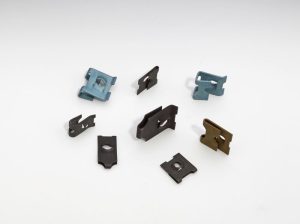
Nuts are commonly used in conjunction with bolts. If you’re trying to secure two or more parts together with a bolt, for instance, you may want to use a nut. You can twist a nut onto the end of the bolt so that the parts remain in place.
While most nuts consist of a hexagonal piece of metal with a threaded interior, though, others use a different design. There are J nuts, for instance, that are designed for use with sheet metal. You can clip them onto a piece of sheet metal. What are J nuts exactly?
J Nuts Explained
J nuts are clip-on nuts that are used to attach two pieces of sheet metal together They don’t feature the same hexagonal shape as most other nuts. Instead, they resemble the letter J. J nuts consist of a clip. One side of the clip is slightly longer than the other side, resulting in a J-like shape.
How to Use J Nuts
Since they don’t feature a traditional hexagonal shape like other nuts, many people don’t know how to use J nuts. After all, you can’t twist them onto the end of a bolt. To use a J nut, you’ll need to clip it onto sheet metal.
J nuts are clip-on nuts. They are designed specifically for use with sheet metal. To use a J nut, you just need to clip it onto the edge of sheet metal panels. Once clipped, you can then drive a screw through the center hole of the J nut. As the screw travels through the J nut, it will pull the two sheet metal panels together.
How J Nuts Differ From U Nuts
In addition to J nuts, there are U nuts. Both J nuts and U nuts are clip-on nuts; they simply feature different designs. J nuts feature a J-shaped design, whereas U-nuts feature a U-shaped design.
When inspecting a U nut, you’ll notice that it has two sides — just like a J nut. The sides of a U nut, however, are of equal lengths. In comparison, one side of a J nut is longer than the other side. U nuts have sides of equal lengths, which results in a uniform U-shaped design.
Benefits of Using J Nuts
Aligning multiple sheet metal panels is a breeze thanks to J nuts. You can place one sheet metal panel on top of another sheet panel, after which you can secure them together using a J nut. The J nut will hold the sheet metal panels together while simultaneously keeping them aligned.
J nuts don’t require any special tools to install. As long as you have some screws and a driver with the appropriate bit, you can easily install them.
